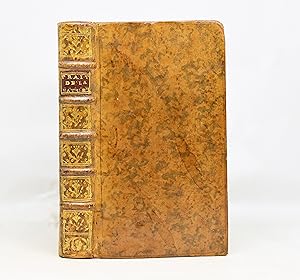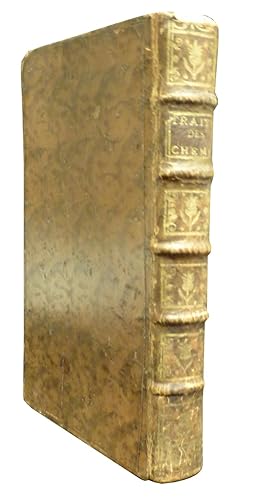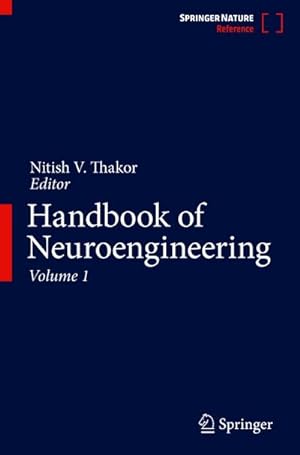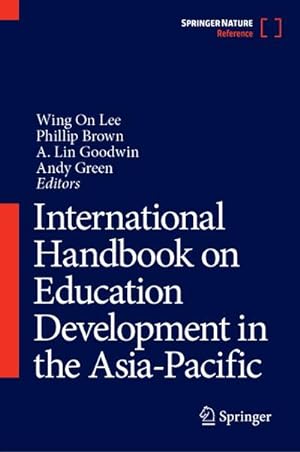nature (Plus de 6 800 résultats)
Type d'article
- Tous les types d'articles
- Livres (6 492)
- Magazines & Périodiques (11)
- Bandes dessinées (1)
- Partitions de musique (4)
- Art, Affiches et Gravures (226)
- Photographies (10)
- Cartes (17)
-
Manuscrits &
Papiers anciens (88)
Etat
Reliure
Particularités
- Edition originale (2 289)
- Signé (590)
- Jaquette (362)
- Avec images (4 403)
- Sans impression à la demande (6 622)
Livraison gratuite
Pays
Evaluation du vendeur
-
Systema Intellectuale huius Universi seu de Veris Naturae rerum originibus Commentarii qvibus omnis eorum Philosophia, qvi Deum esse negant, funditus evertitur. Accedunt Reliquua eius Opuscula. Joannes Lavrentius Moshemius,.Omnia ex Anglico Latine v.
Vendeur : Lynge & Søn ILAB-ABF, Copenhagen, Danemark
Membre d'association : ILAB
Edition originale
Jena, Vidvae Meyer, 1733. Folio. 2 contemp. full calf, richly gilt backs in 8 compartments, raised bands. A few minor nicks to spine ends. Engraved frontispiece (showing Aristotle, Socrates, Strato, Epicur, Anaximander, Pythagoras). (58),1206 pp. + Index Auctorum. Also withbound, and with separate pagination, 4 of the author's other works. 478842"25 pp. Engraved portrait of the author and 3 large engraved vignettes. First Latin edition of the author's "The true Intellectual System of the World" from 1678. - "His most important work, The true Intellectual System., is a fragment of an even larger work he had planned to refute materialism of Epicurus and of Thomas Hobbes. Cudworth believed that a "rightly understood" mechanical and corpuscular philosophy did not destroy traditional religion but instead offered it new support. If matter was inert and utterly passive, then a spiritual principle was necesssary to endow the universe with life and acticity. But the principle involved in the ordinary course of nature was not to be equated with God, for then He would be responsible for the "Errors and bungles" in nature. Such taks were performed by a subordinate and unconscious "plastic nature". Cudworth rejected Cartesian dualism and asserted cosmic continuity." (P.M. Rattansi in DSB). - Brunet II:437 - Graesse II:305.
-
Systema Intellectuale huius Universi seu de Veris Naturae rerum originibus Commentarii qvibus omnis eorum Philosophia, qvi Deum esse negant, funditus evertitur. Accedunt Reliqua eius Opuscula. Joannes Lavrentius Moshemius, Omnia ex Anglico Latine vert. - [THE "PLASTIC MEDIUM"]
Vendeur : Lynge & Søn ILAB-ABF, Copenhagen, Danemark
Membre d'association : ILAB
Edition originale
Jena, Vidvae Meyer, 1733. Folio. Cont. full calf w. richly gilt back. A bit of wear to extremities, but a very nice and clean copy. Beautiful vignettes and woodcut initials at beginning, as well as woodcut end-vignettes to the larger sections. Title-page printed in red and black. Engraved portrait-frontispiece, engraved frontispiece (depicting Aristotle, Socrates, Strato, Epicur, Anaximander and Pythagoras), (69), 1206" 1 blank leaf, (8), 88 47, (1) (16), 42 (8), 25, (1)" (52, -Index) pp. First Latin edition of Cudworth's main work, "The true Intellectual System of the World" from 1678. The English philosopher Ralph Cudworth (1617- 1688) was the leader of the Cambridge Platonists. In 1678 he published parts of his main work, the "Intellectual System", which, according to Cudworth himself, arose out of a discourse refuting determinism, or, as he put it, "fatal necessity". Cudworth set out to prove three matters that together constitute the intellectual system of the universe (in opposition to the physical), namely the existence of God, the naturalness of moral distinctions, and the reality of human freedom, thereby disproving atheism, religious fatalism, and the fatalism of the Stoics. In his criticism of materialistic atheism, Cudworth principally aimed at Hobbes, who he necessarily had to refute. Apart from his great attempt to refute atheism and all the philosophers that he could connect with it, a much discussed part of the book is that in which he introduces his conception of the "Plastic Medium", which is supposed to explain the laws of nature without referring everything directly back to God, and which very much resembles Plato's "World-Soul". This "Plastic Medium" resulted in long philosophic controversies."His [Cudworth's] most important work, The true Intellectual System., is a fragment of an even larger work he had planned to refute materialism of Epicurus and of Thomas Hobbes. Cudworth believed that a "rightly understood" mechanical and corpuscular philosophy did not destroy traditional religion but instead offered it new support. If matter was inert and utterly passive, then a spiritual principle was necessary to endow the universe with life and activity. But the principle involved in the ordinary course of nature was not to be equated with God, for then He would be responsible for the "Errors and bungles" in nature. Such tasks were performed by a subordinate and unconscious "plastic nature". Cudworth rejected Cartesian dualism and asserted cosmic continuity." (P.M. Rattansi in DSB). Brunet II:437 - Graesse II:305.
-
The Effect of Magnetization on the Nature of light Emitted by a Substance. - [THE ZEEMAN-EFFECT - NOBEL PRIZE IN PHYSICS 1902]
Vendeur : Lynge & Søn ILAB-ABF, Copenhagen, Danemark
Membre d'association : ILAB
Edition originale
London, Macmillan & Co, 1896-97. Royal8vo. Bound in later half cloth with gilt lettering to spine. In "Nature", Vol. 55, November 1896 - April 1897. Bookplates to front free end-papers and library stamp to title page. Minor wear to extremities, otherwise very fine and clean. P. 347. [Entire volume: XL, 624 pp.]. First English edition of this landmark paper in which the Zeeman-effect was first announced. It is one of the most important and influential discoveries made in the later half of the 19th century. "The Zeemann effect not only opened a new world of facts which interest the physicist, the chemist, and even the astronomer, but the study also contributed - to an extent much greater than the study of the Stark effect - to the conceptual development of quantum theory" (Jammer). Together with Lorenz, Zeeman was awarded the Nobel Prize in Physics for "the extraordinary service they rendered by their researches into the influence of magnetism upon radiation phenomena". "The last experiment performed by Michael Faraday was an unsuccessful attempt to observe the influence of a magnetic field on the spectral lines of sodium. More than 30 years later, Pieter Zeeman took up the challenge and observed a broadening of the lines, which was soon recognized to be the splitting that we know as the Zeeman effect. Zeeman's account of the discovery, translated for Nature from the Proceedings of the Physical Society of Berlin, includes an interpretation based on Hendrik Lorentz's idea of "small molecular elements charged with electricity", and a rough calculation of the charge to mass ratio of these "ions"." (Nature Physics Portal)."Zeeman is best remembered for his observations in 1896 of the mageto-optic phenomenon that almost immediately was named the Zeeman effect. His experimental discovery was not fortuitous, but the fruition of theoretical views that had motivated attempts over a span of thirty-five years to detect some such interaction between magnetism and light. Zeeman's initial observations were beautifully comprehended by H.A.Lorentz' electromagnetic theory, which also served to guide Zeeman in the very early refinement and extension of his discovery. As a result Zeeman and Lorentz shared the 1902 Nobel Prize for physics in recognition of their accomplishment and of the promise, since overwhelmingly fulfilled, of the Zeeman effect for contributing to the understanding of spectra and the particulate structure of matter." (DSB).
-
Om Forplantning og Udvikling gjennem vexlende Generationsrækker, en særegen Form for Opfostringen i de lavere Dyrklasser. [On Reproduction and Development through Alternation of Generations, a Special Form of Propagation in Lower Animals]. - [ALTERNATION OF GENERATIONS IN ANIMALS AND PLANTS]
Vendeur : Lynge & Søn ILAB-ABF, Copenhagen, Danemark
Membre d'association : ILAB
Edition originale
Copenhagen, Bianco Lunos, 1842. 4to. Recent half cloth with contemporary marbled boards. Light browning throughout. Small ink signature on title-page. IV,76 pp. and 3 double-page, folded lithographed plates with many figs. Withbound: Steenstrup, Undersögelser over Hermaphroditismens Tilværelse i Naturen, 1845. XIV,88 pp. and 1 plate. The scarce first edition of the work in which Steenstrup describes his discovery of the principle of 'alternation of generations', sexual and asexual in plants and animals. "(Steenstrup) showed that certain animals produce offspring which never resemble them but which, on the other hand, bring forth progeny which return in form and nature to their grandparents or more distant ancestors." (Garrison & Morton No 217). A German translation was published the same year, and an English in 1845. Norman 2009 (German translation). "The second major publication - (the first dealing with geology) - of 1842 was "Om Forplantning og Udvikling gjennem vexlende Generationsrækker.", (the work offered), Steenstrup's comprehensive presentation of the form of reproduction that he called 'alternation of generations', that is, the alternation of asexual and sexual reproduction, or metagenesis. This phenomenon had previously been described by Chamisso, but Steenstrup included a greater number of observations, based on a significantly wider range of subjects, and provided an importent chapter on its meaning. Steenstrup's growing reputation, won him an appointment as professor of zoology at the University of Copenhagen, where he tought from 1846 until 1885."(DSB XII, p. 9).
-
Sur les Mouvemens électro-magnétiques et la théorie du magnétisme. (Traduit par M. Anatole-Riffault). + (André-Marie Ampere et Felix Savary:) Notes relatives au Mémoire de M. Faraday. - [ THE FIRST ELECTRIC MOTOR - INTRODUCING "LINES OF FORCE" AND THE UNIVERSE OF "FIELDS" (FRENCH EDITION).]
Vendeur : Lynge & Søn ILAB-ABF, Copenhagen, Danemark
Membre d'association : ILAB
Edition originale
Paris, Crochard, 1821. 8vo. In contemporary half calf. Wear to extremities and hindges weak. Weak dampstain to lower inner margin, not affecting text. In: "Annales de Chimie et de Physique, Par MM. Gay-Lussac et Arago.", tome 18 (Septembre Cahier). Entire volume offered. [Faraday's paper:] pp. 337-370 and 2 folded engraved plates (showing the experimental apparatus). [Ampère & Savary's Notes:] pp. 370-379. [Entire volume: 448 pp. + 5 plates. First French edition of Faraday's famous paper "On some new Electro-Magnetical Motion, and on the Theory of Magnetism. By Michael Faraday, Chemical Assistant in the Royal Institution. (1821)", recording one of the most influential discoveries in physics in the 19th Century, as Faraday here, as the very first, showed how to CONVERT THE ELECTRICAL AND MAGNETIC FORCES INTO CONTINUAL MECHANICAL MOVEMENT, thus creating the first electric motor, using the principle of electromagnetic rotation. In the first paper he introduced for the first time the concept of "LINE OF FORCE" and hereby deliniating "a picture of the universe as consisting of fields of various types, one that was more subtle, flexible, and useful than the purely mechanical picture of Galileo and Newton. The FIELD UNIVERSE was to be recognized with Maxwell half a century later and with Einstein, after an interval of another halfcentury."(Asimov)."Ever since Hans Christian oersted's announcement of the discovery of electromagnetism in the summer of 1820, editors of scientific journals had been inundated with articles on the phenomenon. Theories to explain it had multiplied, and the net effect was confusion. Were all the effects reported real ? Did the theories fit the facts ? It was to answer these questions that Phillips turned to Faraday and asked him to review the experiments and theories of the past months and separate truth from fiction,.Faraday agreed to to undertake a short historical survey.His entusiasm was aroused in September 1821, when he turned to the investigation of the peculiar nature of the magnetic force created by an electrical current. Oersted had spoken of the "electrical conflict" surrounding the wiree and had noted that "this conflict performs circles".Yet as he experimented he saw precisely what was happening. Using a small magnetic needle to map the pattern of magnetic force, he noted that oneof the poles of the needle turned in a circle as it was carried around the wire. He immediately realized that a single magnetic pole would rotate unceasingly around a current-carrying wire so long as the current flowed. He then set about devising an instrument to illustrate this effect. His paper "On some new Electro-Magnetical Motion, and on the Theory of Magnetism" appeared in the 21 October 1821 issue of the "Quarterly Journal of Science" (The paper offered in the first French edition). It records the first conversion of electrical into mechanical energy. It also contained the first notion of the line of force."(DSB IV, pp. 533).
-
Sur les Mouvemens électro-magnétiques et la théorie du magnétisme. (Traduit par M. Anatole-Riffault). + (André-Marie Ampere et Felix Savary:) Notes relatives au Mémoire de M. Faraday. - [ THE FIRST ELECTRIC MOTOR - INTRODUCING "LINES OF FORCE" AND THE UNIVERSE OF "FIELDS" (FRENCH EDITION).]
Vendeur : Lynge & Søn ILAB-ABF, Copenhagen, Danemark
Membre d'association : ILAB
Edition originale
Paris, Crochard, 1821. 8vo. In contemporary half calf with gilt lettering to spine. Traces of paper label to lower part of spine. Light wear to extremities and small stamp to title page. In: "Annales de Chimie et de Physique, Par MM. Gay-Lussac et Arago.", tome 17 & 18 (Septembre Cahier). Entire volume offered. A fine copy. [Faraday's paper:] pp. 337-370 and 2 folded engraved plates (showing the experimental apparatus). [Ampère & Savary's Notes:] pp. 370-379. [Entire volume: 448 pp. + 1 plate" 448 pp. + 5 plates. First French edition of Faraday's famous paper "On some new Electro-Magnetical Motion, and on the Theory of Magnetism. By Michael Faraday, Chemical Assistant in the Royal Institution. (1821)", recording one of the most influential discoveries in physics in the 19th Century, as Faraday here, as the very first, showed how to CONVERT THE ELECTRICAL AND MAGNETIC FORCES INTO CONTINUAL MECHANICAL MOVEMENT, thus creating the first electric motor, using the principle of electromagnetic rotation. In the first paper he introduced for the first time the concept of "LINE OF FORCE" and hereby deliniating "a picture of the universe as consisting of fields of various types, one that was more subtle, flexible, and useful than the purely mechanical picture of Galileo and Newton. The FIELD UNIVERSE was to be recognized with Maxwell half a century later and with Einstein, after an interval of another halfcentury."(Asimov)."Ever since Hans Christian Oersted's announcement of the discovery of electromagnetism in the summer of 1820, editors of scientific journals had been inundated with articles on the phenomenon. Theories to explain it had multiplied, and the net effect was confusion. Were all the effects reported real ? Did the theories fit the facts ? It was to answer these questions that Phillips turned to Faraday and asked him to review the experiments and theories of the past months and separate truth from fiction,.Faraday agreed to to undertake a short historical survey.His entusiasm was aroused in September 1821, when he turned to the investigation of the peculiar nature of the magnetic force created by an electrical current. Oersted had spoken of the "electrical conflict" surrounding the wiree and had noted that "this conflict performs circles".Yet as he experimented he saw precisely what was happening. Using a small magnetic needle to map the pattern of magnetic force, he noted that oneof the poles of the needle turned in a circle as it was carried around the wire. He immediately realized that a single magnetic pole would rotate unceasingly around a current-carrying wire so long as the current flowed. He then set about devising an instrument to illustrate this effect. His paper "On some new Electro-Magnetical Motion, and on the Theory of Magnetism" appeared in the 21 October 1821 issue of the "Quarterly Journal of Science" (The paper offered in the first French edition). It records the first conversion of electrical into mechanical energy. It also contained the first notion of the line of force."(DSB IV, pp. 533).
-
Grundsa?tze des Natur- und Vo?lckerrechts, worin alle Verbindlichkeiten und alle Rechte aus der Natur des Menschen (.).
Vendeur : Lynge & Søn ILAB-ABF, Copenhagen, Danemark
Membre d'association : ILAB
Halle im Magdeburgischen, Rengerische Buchhandlung, 1754. 8vo. In contemporary full vellum. Boards with a stains and scratches, but overall a very nice and clean copy. (32), 920, (50) pp. Rare first German translation of Wolff?s important thesis on the law of nature and law of nations. It was first published in Latin as "Institutiones Juris Naturae et Gentium" (1750) and the present is the first venacular-edition. "The key concepts of Wolff?s natural law and the law of nations that derived from it were human perfection and happiness. Drawing heavily on scholastic predecessors, Wolff claimed that the principles of natural law (i.e. the duties and rights of men) could be derived from the correct definition of human nature, namely, that man ultimately seeks the realization of his natural abilities and attainment of happiness. As Jerome Schneewind has argued, ?in his metaphysics he [Wolff] refers back to his logic to explain the order of his argument, in the ethics back to the metaphysics for his principles, and so on through the series of expositions, as he reminds us each time he expounds the later stages. The whole constitutes a modern protestant scholastic system. Wolff?s law of nations was part of this system." (Nokkala, The Development of the Law of Nations). "Christian Wolff (1679?1754) was a philosopher, mathematician, and scientist of the German Enlightenment. He is widely and rightly regarded as the most important and influential German philosopher between Leibniz and Kant. His scholarly output was prolific, numbering more than 50 (most multi-volume) titles, in addition to dozens of shorter essays and prefaces and nearly 500 book reviews. Through his series of textbooks, published first in German and then in Latin, Wolff made signal contributions to nearly every area of philosophical investigation of his time, including but not limited to logic, metaphysics, ethics, political philosophy, and aesthetics. Wolff is perhaps best known in his role as (co-)founder of the ?Leibnizian-Wolffian philosophy?, and while Wolff himself rejected the term, the philosophical system it designates quickly gained broad, if not universal, acceptance within German universities in the first half of the eighteenth century."(Stanford Encyclopedia of Philosophy).
-
Ueber electrisch-magnetische ewegungen, und die Theorie des Magnetismus" von Faraday, chem. Assistenten in d. Roy. Inst. (geschrieben London d. 11 Sept. 1821: mit Anmerkungen von einem Freunde des Hrn Ampère. Frei bearbeitet und mit einigen Erläuterun.
Vendeur : Lynge & Søn ILAB-ABF, Copenhagen, Danemark
Membre d'association : ILAB
Edition originale
Leipzig, Johann Ambrosius Barth, 1822. Without wrappers as extracted from "Annalen der Physik und der Physikalischen Chemie. Hrsg. Ludwig Wilhelm Gilbert", Bd. 71. Titlepage to vol. 71, pp. 124-171 a. pp. 172-176 and 1 folded engraved plate showing experimental apparatus. Clean and fine. First German edition of Faraday's famous paper "On some new Electro-Magnetical Motion, and on the Theory of Magnetism. By Michael Faraday, Chemical Assistant in the Royal Institution. (1821)", recording one of the most influential discoveries in physics in the 19th Century, as Faraday here, as the very first, showed how to CONVERT THE ELECTRICAL AND MAGNETIC FORCES INTO CONTINUAL MECHANICAL MOVEMENT, thus creating the first electric motor, using the principle of electromagnetic rotation. In the first paper he introduced for the first time the concept of "LINE OF FORCE" and hereby deliniating "a picture of the universe as consisting of fields of various types, one that was more subtle, flexible, and useful than the purely mechanical picture of Galileo and Newton. The FIELD UNIVERSE was to be recognized with Maxwell half a century later and with Einstein, after an interval of another halfcentury."(Asimov)."Ever since Hans Christian oersted's announcement of the discovery of electromagnetism in the summer of 1820, editors of scientific journals had been inundated with articles on the phenomenon. Theories to explain it had multiplied, and the net effect was confusion. Were all the effects reported real ? Did the theories fit the facts ? It was to answer these questions that Phillips turned to Faraday and asked him to review the experiments and theories of the past months and separate truth from fiction,.Faraday agreed to to undertake a short historical survey.His entusiasm was aroused in September 1821, when he turned to the investigation of the peculiar nature of the magnetic force created by an electrical current. Oersted had spoken of the "electrical conflict" surrounding the wiree and had noted that "this conflict performs circles".Yet as he experimented he saw precisely what was happening. Using a small magnetic needle to map the pattern of magnetic force, he noted that oneof the poles of the needle turned in a circle as it was carried around the wire. He immediately realized that a single magnetic pole would rotate unceasingly around a current-carrying wire so long as the current flowed. He then set about devising an instrument to illustrate this effect. His paper "On some new Electro-Magnetical Motion, and on the Theory of Magnetism" appeared in the 21 October 1821 issue of the "Quarterly Journal of Science" (The paper offered in the first German edition). It records the first conversion of electrical into mechanical energy. It also contained the first notion of the line of force."(DSB IV, pp. 533).
-
Principia generalia theoriae figurae fluidorum in statu aequilibrii.
Vendeur : Lynge & Søn ILAB-ABF, Copenhagen, Danemark
Membre d'association : ILAB
(Göttingen, Dieterich, 1830). 4to. Partly uncut. Spine closed with paperlabel. In: "Commentarii Societatis Regiae Scientiarum Gottingensis. Classes Mathematica", Bd. VII. Pp. (39-) 88. Clean and fine. First appearance of an importent paper in which Gauss introduced a new method in the calculus of variations and a mathematical treatment of forces of attraction.Gauss had worked on physics already before 1831, publishing "Uber ein neues allgemeines Grundgesetz der Mechanik" , which contained the principle of least constraint, and "Principia generalia theoriae figurae fluidorum in statu aequilibrii" which discussed forces of attraction. These papers were based on Gauss's potential theory, which proved of great importance in his work on physics. He later came to believe his potential theory and his method of least squares provided vital links between science and nature."In 1830 appeared Principia generalia theoriae figurae fluidorum in statu aequilibrii, his one contribution to capillarity and an important paper in the calculus of variations, since it was the first solution of a variational problem involving double integrals, boundary conditions, and variable limits."(DSB).Dunnington, no. 95.- The memoir was reprinted in Ostwald's Klassiker No. 135.
-
Researches on the oxymuriatic Acid, its Nature and Combinations" and on the Elements of the muriatic Acid. With some Experiments on Sulphur and Phosphorus, made in the Laboratory of the Royal Institution. Read July 12, 1810. (+) The Bakerian Lecture. .
Vendeur : Lynge & Søn ILAB-ABF, Copenhagen, Danemark
Membre d'association : ILAB
London, W. Bulmer and Co., 1810 a. 1811. 4to. No wrappers as extracted from "Philosophical Transactions" 1810 - Part I. Pp. 231-257 and 1811 - Part I. Pp. 1-35. Both papers clean and fine. With titlepages to 1810, Part I and 1811, Part I. Titlepage to 1810 with a brownspot to upper inner margin. First appearance of these importent papers in the history of chemistry in which Davy announces his proofs of the elementary nature of clorine, describing the preparation, physical and chemical properties of a new gas, which he called 'euchlorine'. It is unstable and explodes on heating to give chlorine and oxygen. Davy here suggested the name 'chlorine', from a greek work for green, because of the greenish colour of the gas.Thorpe said of this first paper "As a piece of induction, the memoir is a model of its kind, and as an exercise in "the scientific use of ofthe imagination" it has few equals."Davy's researches on chlorine are of an importence comparable with those on the alkali metals. Chlorine, first discovered by Scheele, was regarded by him as a *dephlogisticated muriatic acid". As phlogiston was practically synonymous with with hydrogen to Scheele, this view was essentialy correct. Lavoisier, however, chiefly occupied with phenomena of combustion, assumed that chlorien was an oxide of an unknown "radical". Davy performed many experiments endeavouring to confirm the presence of oxygen and finally concluded that chlorine was an element."(A Source Book in Chemistry 1400-1900, p. 244).
-
Possible Relation Between Deoxyribonucleic Acid and Protein Structures. - [GAMOW'S DISCOVERY OF NUCLEOTIDES]
Vendeur : Lynge & Søn ILAB-ABF, Copenhagen, Danemark
Membre d'association : ILAB
Edition originale
London, Macmillian and Co, 1954. Royal8vo. Bound in contemporary full cloth with title to spine. In "Nature", Vol. 173, 1968. Library stamp to upper right corner of title page, otherwise a fine and clean copy. Pp. 709-13. [Entier volume: LXVVI, 1246 pp.]. First printing of Gamow's exceedingly influential discovery of four different kinds of acino-acids, nucleotides, which were to influence Watson and Crick in their further work. To Gamow, most famous for his work within physics and cosmology, this was a highly unfamiliar field. His work was described as: "perhaps the last example of amateurism in scientific work on a grand scale"."In early 1954, less than a year after J. D. Watson and Francis Crick discovered the double helical structure of DNA, Gamow recognized that the information contained in the four different kinds of nucleotides (adenine, thymine, guanine, cytosine) constituting the DNA chains could be translated into the sequence of twenty amino acids which form protein molecules by counting all possible triplets one can form from four different quantities. This remarkable way in which Gamow could rapidly enter a more or less unfamiliar field at the forefront of its activity and make a highly creative contribution to it, often far more by intuition than by calculation, led Ulam to characterize his work as "perhaps the last example of amateurism in scientific work on a grand scale." It earned him membership in a number of professional societies-American Physical Society, Washington Philosophical Society, International Astronomical Union, American Astronomical Society, U.S. National Academy of Sciences, Royal Danish Academy of Sciences and Letters-as well as an overseas fellowship in Churchill College, Cambridge." (DSB)"Even as he was starting research in relativistic cosmogony, Gamow came to think that the time was nearly ripe for phys-ics to help biology move beyond its descriptive stage. This perception probably derived from Erwin Schrödinger's What Is Life? The Physical Aspect of the Living Cell (1945) and his longtime friend Max Delbrück's successful migration from theoretical physics to experimental genetics. In any case, Gamow got so caught up with the idea that rejecting his initial plans to revive the Washington conferences with one focused on cosmogony, he instead devoted the first postwar gathering to "the physics of living matter." His preparations for the conference held in the fall of 1946, and his subse-quent endeavours to promote the infusion of more physics into biology, led Gamow to believe by the early 1950s that the central "riddle of life" is how each species' genes shape its distinctive proteins. But lacking any notion about the molecular structure of genes, he could not imagine how to formulate this enigma in a tangible way.In June 1953 Gamow got an idea for doing so from reading James Watson and Francis Crick's soon-to-be-famous Nature paper on DNA's structure. Confident that they were on the right track, he impulsively introduced himself to them by letter, praising them for their success in moving biology into the "exact' sciences" and expressing his hope that he could meet with them in England at the end of the summer to talk about the possibility of using combinatorics to tackle genetic problems. As both were planning to be away then, Watson discussed Gamow's letter briefly with Crick, then filed it away. In late October, undeterred by their failure to respond, Gamow sent a short note off to Nature on a "Possible Relation between Deoxyribonucleic Acid and Protein Structures" (1954). He opened by crediting Watson and Crick with having established that the basic hereditary materials are DNA molecules. Then he daringly outlined what soon evolved into the protein-coding research program. He proposed that each organism's DNA "could be characterized by a long number written in a four-digital system" that "completely determined" the composition of its unique complement of proteins, which in turn "are long peptide chains formed by about 20 different amino-acids [that] can be considered as 'long' words based on a 20-letter alphabet." The problem to be solved was how these "four-digital 26 numbers [are] translated into such 'words.'" Gamow closed by suggesting how this might be done and promising that a fuller account would be published elsewhere.During the next few months, Gamow plunged into work on the protein-coding problem. He wrote up an expanded version of his note in Nature for the National Academy of Sciences' Proceedings and, when it was not accepted there-possibly because Gamow jokingly listed his fictional character Tompkins as co-author-submitted it successfully (without Tompkins as co-author) to the Royal Danish Society of Sciences' biological series. He also spurred first Crick, then Watson, and then many other researchers-especially those associated with Caltech's Delbrück and Berkeley's Gunther Stent-to join the enterprise of identifying how DNAcoded proteins. As this growing research circle reviewed prior and ongoing experimental work of relevance, a consensus soon emerged that DNA did not serve as a simple template in protein synthesis. It appeared instead that the coding might be a two-step process in which DNA first coded RNA and then RNA coded proteins. Although initially resisting this view, Gamow ended up as the "synthesizer" in the "RNATie Club," founded in mid-1954 to foster the circle's informal communications and camaraderie.Gamow's involvement in the expanding circle of coding researchers remained intense for another year and a half. He found it stimulating to be once again on the wave crest of an exciting new specialty. Just as important if not more so, he enjoyed being at the center of the ambitious circle's partying and joking. But starting in late 1955, years before a consensus emerged about the coding of proteins, Gamow's engagement with the problem wilted. One reason was that his marriage of 23years had just fallen apart. Asecond, a.
-
Un nouveau type de radioactivité. (Séance du 15 Janvier 1934).
Vendeur : Lynge & Søn ILAB-ABF, Copenhagen, Danemark
Membre d'association : ILAB
Paris, Gauthier-Villars, 1934. 4to. No wrappers. In: "Comptes Rendus Hebdomadaires des Séances de L'Academie des Sciences", Tome 198 No 3. Titlepage to vol. 198. Pp. (213-) 292. (Entire issue offered). The joint paper: pp. 254-256 a. 1 photographic illustration in the text. Titlepage with a stamp on verso, 2 small tears and a tiny bit of upper right corner gone. Titlepage a bit browned. First appearance of this seminal paper in which artificial radioactivity was announced for the first time. Curie and Joliot were awarded the Nobel Prize in Chemistry 1935 "in recognition of their synthesis of new radioactive elements"."Until this date (1934), atomic nuclei emitting radiation were found in nature: it was called the natural radioactivity. It had been known since Rutherford that this natural radioactivity changed a nucleus into an other one: for instance radium becomes finally lead after many radioactive decays. We could say that lead does not become gold but gold becomes lead! But. this change of matter was not under control. It was not possible to construct the desired chemical element as the alchemist dreamed. But Irene and Frederic Joliot-Curie, made the dream become almost reality."Another very important development in the early 1934 by the Joliot-Curies in connection with irradiation of aluminum by alpha particles. The two French scientists detected the production of the recently discovered positrons. [.] However, they soon realized that the positron activity continued after the alpha source was removed and that they had, in fact, discovered positive beta radioactivity. The importance of the discovery of artificial radioactivity was immediately recognized and resulted in a Nobel Prize in chemistry to the Joliot-Curies in 1935. The new phenomenon immediately became widely employed in nuclear physics, chemistry, biology, and medicine." (Kragh, Quantum Generations, p. 187)"These elegant experiments, which provided the first chemical proof of induced transmutations and showed the possibility of artificially creating radioisotopes of known stable elements, were repeated and extended in the major nuclear physics laboratories of various countries " (DSB).Born on 12 September 1897 in Paris, Irène Curie was the daughter of Pierre and Marie Curie. "During World War I, she worked as a nurse, helping her mother operate radiography equipment, and then studied physics and mathematics at the Sorbonne, gaining a doctorate for studying the range of alpha particles. She then went to work for her mother at the Radium Institute. There she met Frédéric Joliot whom she married in 1926. Frédéric Joliot was born on 19 March 1900 in Paris - He joined the Radium Institute in 1925 and obtained his PhD in 1930. Together the Joliot-Curies worked on radioactivity and the transmutation of the elements. Twice they just missed major discoveries: in 1932 when Chadwick beat them to the neutron, and in 1933 when Anderson discovered the positron. However, in 1934, whilst bombarding light elements with alpha particles, the Joliot-Curies noticed that, although proton production stopped when the alpha particle bombardment stopped, another form of radiation continued. The alpha particles had produced an isotope of phosphorus not found in nature. This isotope was radioactive and was decaying through beta-decay" (DSB).
-
Expériences relatives aux générations dites spontanées. (+) De l'origine des ferments. Nouvelles expériences relatives aux générations dites spontanées. (+) Nouvelles expériences relatives aux générations dites spontanées. (+) Suite à une précédente c.
Vendeur : Lynge & Søn ILAB-ABF, Copenhagen, Danemark
Membre d'association : ILAB
(Paris, Mallet-Bachelier), 1860. 4to. No wrappers. In: "Comptes Rendus Hebdomadaires des Séances de L'Academie des Sciences", Tome 50, No 6 a. No 19, Tome 51, No 10 a. No 19. (4 entire issues offered). Pasteur's papers: pp. 303-307, 849-854 (tome 50), pp. 348-352, 675-678 (tome 51). First appearance of the suite of the 4 groundbreaking papers marking the downfall of the theory of spontaneous generation, and all of Pasteur's later work in this field can be seen as an extension, elaboration, and defence of the principles and methods set forth here. It is from these conclusions all modern bacteriology and immunology have developed. Pasteur was awarded the Zecker Price 1861 for these discoveries. "Pasteur's publications on the subject of spontaneous generation consists chiefly of communications to the Academy of Sciences in Paris and published in abstracts in the Comptes rendus. (the paper offered). In these communication he dealt with the collection and demonstration of erms in the air, the origin of ferments, the distribution of germs in nature, and many other questions. These reports were finally expanded in his famous "Memoire sur les corpuscules organisés qui existent dans l'atmosphere. Examen de la doctrine de génerations spontanées", which was published in 1861. (Bullocdh "The History of Bacteriology", p. 96).Printing and the Mind of Man No, 336 (b) - Garrison & Morton No. 2474.
-
Enquiry into the Nature of Certain 19th Century Pamphlets
Edité par Scolar Pr, 1983
ISBN 10 : 0859676374ISBN 13 : 9780859676373
Vendeur : GoldBooks, Denver, CO, Etats-Unis
Livre
Hardcover. Etat : new. New Copy. Customer Service Guaranteed.
-
Victoria And The Australian Gold Mines In 1857; With Notes On The Overland Route From Australia, Via Suez.
Edité par London: Smith, Elder, And Co., 1857., 1857
Vendeur : D & E LAKE LTD. (ABAC/ILAB), Toronto, ON, Canada
Edition originale Signé
Hardcover. 8vo. pp. xvi, 466, [blank leaf] + 16(ads). 3 maps (2 folding; frontis. partly hand-coloured). original blind-stamped cloth, recased preserving endpapers (extremities trifle frayed, occasional hint of foxing). Inscribed to John Logan from the author on the title-page. First Edition. An important work on the colony of Victoria by an early settler. Westgarth emigrated to Port Phillip (Victoria) in 1840 and resided there until 1857. A prominent figure in the social and political development of Victoria, Westgarth represented Melbourne from 1850 to 1853 in the legislature of New South Wales and in the first legislative Council of Victoria. He was responsible for the passing of the 1852 resolution against the further transportation of convicts to the colony. 'Three modern historians have described Westgarth as 'the John Stuart Mill of Victoria', 'the outstanding sociological thinker of the colonies', and 'the most perceptive of the early Australian historians'. His four major books on Victoria, each of which were fresh treatments, were written primarily to provide accurate information on the colony and also to advertise it.Westgarth is distinctive in his period for his efforts to explain the course of historical events and to seek reasons for change, and for his occasional generalizations about the nature of colonial society.His pioneering statistical work was an aspect of his modern approach to the conduct of business and government. But his practical work as one of the most advanced radical liberals of his day ranks equally with his intellectual and literary achievement.'. (Geoffrey Serle, ADB) Ferguson 18418. Signed by Author(s).
-
A Practical Treatise On The Diseases Of The Teeth, In Which The Origin And Nature Of Decay Are Explained; And The Means Of Prevention Pointed Out.
Edité par London: Longman, Rees, Orme, Brown, Green & Longman & Birmingham: J.Belcher And Son, 1835., 1835
Vendeur : D & E LAKE LTD. (ABAC/ILAB), Toronto, ON, Canada
Edition originale
Hardcover. 8vo. pp. xiv, [1 leaf]errata, 158, [1 leaf]. 6 plates, drawn by C.Docker & engraved by W.Hill. An untrimmed copy in early cloth (slight fraying to extremities, plates with some light spotting & dampstaining to lower margin). First Edition. Crowley 1603 (citing publication date of 1839, probably in error).
-
The Robin-Hood Society: A Satire With Notes Variorum. By Peter Pounce, Esq. [Pseud.].
Edité par London: Printed for E.Withers, and W.Reeve., 1756., 1756
Vendeur : D & E LAKE LTD. (ABAC/ILAB), Toronto, ON, Canada
Edition originale
Hardcover. 8vo. pp. 2 p.l., xvii, [18]-108. emgraved frontis. engraved ornaments & initials. full modern dark green calf by R.W.Smith, gilt back, gilt inside dentelles, a.e.g. (frontis. trimmed & mounted, offsetting on title, some scattered light foxing, page numbers sometimes shaved or cut into, short marginal tear in 1 leaf). First Edition. A satirical poem on the Robin-Hood Society, a debating society composed of "eminent and ingenious Men" who each paid six-pence admission every Monday Night, at the Sign of the Robin-Hood and Littlle John, in Butcher-Row, to drink and discuss all manner of subjects from religion to science to the character of the actor David Garrick. "It may possibly be said, that the Robin-Hood Society is not of so pernicious a Nature, and iniquitous Tendency, as I have represented it: That I have exaggerated, and stretched Things, beyond their due Proportion, and natural Limits; and have raised a Mountain of Mischief, from a Molehill of no Consequence: But in Answer to any such Remark, I do confidently affirm, that a Man that goes to the Robin-Hood, is as unsafe with Regard to his Morals, as an honest Man is with Respect to his Purse in the Company of Pickpockets." (p. xiii) Half of the text is composed of footnotes.
-
L'Éleve De La Nature, Nouvelle Édition.
Edité par Amsterdam.Lille: J.B.Henry, 1771., 1771
Vendeur : D & E LAKE LTD. (ABAC/ILAB), Toronto, ON, Canada
Edition originale
3 Volumes. 12mo. pp. xii, 263; 2 p.l., 262, [1 leaf]errata; 2 p.l., iii, 226, [1 leaf]errata. with half-titles. 3 engraved frontis. & 2 engraved plans (1 folding) + frontis. in Vol. III present in duplicate & frontis. from another edition bound in Vol. II. woodcut ornaments & initials. contemporary bds. (rubbed, occasional spotting & foxing, repairs to lower margin of title in Vol. II & inner margin of frontis. in Vol. III). Third Enlarged Edition, the first to include the third volume, and the first edition to be illustrated. A close imitation of Rousseau's Émile, published several times under Rousseau's name; the heroine's name is Julie. The third volume is dedicated to the inhabitants of Virginia. Barbier II 59. Cioranescu 33165. Gove p. 351. cfCohen-De Ricci (1774 edn.). cfConlon,Ouvrages Français Relatifs À Jean Jacques Rousseau, 278, 439, 528.
-
Visual unbounded(Chinese Edition)
Edité par ???????, 2017
ISBN 10 : 7517906526ISBN 13 : 9787517906520
Vendeur : liu xing, Nanjing JiangSu, JS, Chine
Livre
Hardcover. Etat : New. HardCover. Pub Date: 2017-09-01 Pages: 256 Language: Chinese Publisher: the China photography publishing house Photographer Mr Wu Youcang photography portfolio of unbounded vision. put on my desk.These deep-themes works. beating my heart. let me at the time of the desk work tired. browse the appreciation. as if place oneself in the depths of the nature.
-
Gathering What the Great Nature Provided: Food Traditions of the Gitksan
Edité par University of Washington Press, 1980
ISBN 10 : 0295957107ISBN 13 : 9780295957104
Vendeur : GoldBooks, Denver, CO, Etats-Unis
Livre
Hardcover. Etat : new. New Copy. Customer Service Guaranteed.
-
A Treatise of the Lawes of the Forest: Wherein is declared not onely those Lawes, as they are now in force, but also the originall and beginning of Forests:, And what a Forest is in his owne proper nature, and wherein the same doth differ from a Chase, a
Edité par printed for the Society of Stationers, 1615
Vendeur : M and R Clark, Halifax, Royaume-Uni
Livre
Full-Leather. Etat : Fair. Full subtitle is Wherein is declared not onely those Lawes, as they are now in force, but also the originall and beginning of Forests:, And what a Forest is in his owne proper nature, and wherein the same doth differ from a Chase, a Parke, or a Warren, with all such things as are incident or belonging thereunto, with their severall proper tearmes of Art. Also A Treatise of the Pourallee, declaring what Pourallee is, how the same first began, what a Pourallee man may do, how he may hunt and use his owne Pourallee, how farre he may pursue and follow after his chase, together with the limits and bounds, as well of the Forest, as the Pourallee. Collected, as well out of the Common Lawes and Statutes of this land, As also out of sundrie learned anncient Authors, and out of the Assises of Pickering and Lancaster by John Manwood. Whereunto are added the Statutes of the Forest, a Treatise of the severall offices of Verderors, Regardors, and Foresters, & the Courts of Attachments, Swanimote, & Iustice seat of the forest, and certaine principall Cases, Iudgements, and Entries of the Assises of Pickering and Lancaster; never heretofore printed for the publique 1615 old full calf with raised bands - spine replaced many years ago Gold number on spine. Pagination, one blank page, xv, 258 plus two blank leaves. Pages numbered on one side only so modern pagination would be xxx, 516. First blank leaf has been repaired and old book plate- probably mid 18 century- stuck over the repair. Earlier names on front of blank leaf and a figure - four shillings. Wormhole through first 12 pages. Looks as if new endpapers have been added many years ago and the old blank endppapers retained as the blank leaves referred to above Internally a very clean copy Size of pages 135 mm by 188mm . Before ordering please check with us about availability and cost of postage (including insurance) by using the "Ask the Bookseller a Question" button.
-
Handbook of Advanced Ceramics and Composites (Hardcover)
Edité par Springer Nature Switzerland AG, Cham, 2020
ISBN 10 : 3030163466ISBN 13 : 9783030163464
Vendeur : CitiRetail, Stevenage, Royaume-Uni
Livre Edition originale
Hardcover. Etat : new. Hardcover. This handbook presents an authoritative account of the potential of advanced ceramics and composites in strategic applications, including defense, national security, aerospace, and energy security (especially nuclear energy). It highlights how their unique combination of superior properties such as low density, high strength, high elastic modulus, high hardness, high temperature capability, and excellent chemical and environmental stability are optimized in technologies within these fields. The handbook is organized according to application type. It allows readers to learn about strategies that have been used in different fields and to transfer them to their own. The book addresses a wide variety of ceramics and their composites, including PZT ceramics, carbon nanotubes, aerogels, silica radomes, relaxor ferroelectrics, and many others. This handbook presents an authoritative account of the potential of advanced ceramics and composites in strategic applications, including defense, national security, aerospace, and energy security (especially nuclear energy). Shipping may be from our UK warehouse or from our Australian or US warehouses, depending on stock availability.
-
LA SUISSE PITTORESQUE ornée de vues dessinées spécialement pour cet ouvrage par W. H. Bartlett, accompagnée d un texte par William Beattie [.] Traduit de l anglais par L. de Bauclas.
Vendeur : Librairie de l'Univers, Lausanne, Suisse
Londres: Gorges Virtue; Paris: Ferrier, 1836. Complet en 2 vol. in-4: 21,5 x 28 cm. I/ 1 titre grav., vi pp. [titre, au lecteur], 1 f. n. chiff. [table et avis au relieur], 192pp. + 57 pl. grav.; II/ 2 ff. n. chiff. [titre, avis au relieur], 136 pp. + 49 pl. grav. + 1 carte dép. de la Suisse. Première édition française de ce célèbre helvetica du XIXe illustré de 108 vues gravées d après nature, de deux vignettes de titre et bien complet de la carte dépliante de la Suisse reliée in fine du second volume. Le texte est en français, les titres et légendes des planches sont en anglais. L originale anglaise a paru en six livraisons la même année. «Un des plus importants albums publiés sur la montagne au début du XIXe siècle, superbement illustré [.] peu courant et recherché». (Perret, no 0322). Reliures de l époque en veau vert. Dos lisse avec titre en capitales dorées. Décors d entrelacs et de volutes rocailles. Toutes tranches dorées. Traces de frottement aux reliures. Rousseurs éparses. Reliures décoratives ayant préservé leur couleur verte. Bien complet de toutes les figures annoncées. Médecin, mais également poète d origine écossaise, William Beattie (1793-1875) compose déjà durant ses études un ouvrage consacré à la Suisse: The Swiss Relic. Entre 1835 et 1836, il parcourt la Suisse avec son ami et compagnon de voyage, le célèbre graveur W. H. Bartlett, et donne ainsi naissance à la Suisse pittoresque. Le duo Bartlett-Beattie produira d autres séries illustrées consacrées à l Ecosse, aux châteaux et églises d Angleterre ou encore au Danube. «Une des plus belles descriptions de la Suisse [.], elle offre un tableau lyrique et exhaustif des payages et des habitants». (DHS online).
-
TRAITÉ DE LA NATURE ET DE LA GRACE. Par le Père Malebranche, prêtre de l Oratoire. Dernière édition, corrigée et augmentée.
Vendeur : Librairie de l'Univers, Lausanne, Suisse
A Rotterdam: Chez Reiner Leers, 1712. In-12: 10 x 17 cm, 6 ff. n. chiff., 408 pp. [Traité, avec additions, Éclaircissements, Défense contre l accusion de M. de La Ville], 1 f. n. chiff. [errata]. Dernière édition parue du vivant de l auteur après l originale chez Daniel Elzévir en 1680 à Amsterdam. Belle reliure légèrement postérieure en basane marbrée. Dos à cinq nerfs avec pièce de titre en maroquin rouge et caissons aux petites fers. Très bel exemplaire en excellent état de conservation. Dans ce traité mis à l index en 1690, Malebranche (1638-1715) développe pour la première fois sa thèse de l occasionalisme, proche du fatalisme de Leibniz. « [ ] un ouvrage d un intérêt aussi haut à tous égards: littéraire, puisque sa beauté concise éveillait l admiration d un Sainte-Beuve; philosophique, puisqu il contient le premier exposé du système de l occasionalisme [ ], théologique, puisqu il suscite une querelle avec le jansénisme; historique puisqu il déchaîne à travers l Europe une série de polémiques entre les plus grandes illustrations philosophiques et théologique du temps: Bossuet, Fénelon, Arnauld, Bayle, Leibnitz, etc.» (Oeuvres complètes / éd. G. Dreyfus, 1958, tome V, p. VII).
-
CAMINOLOGIE, ou traité des cheminées, contenant des observations sur les différentes causes qui font fumer les cheminées, avec des moyens pour corriger ce défaut.
Vendeur : Librairie de l'Univers, Lausanne, Suisse
Edition originale
Dijon, F. Desventes, 1756. 1 pt. in-4: 11 x 17 cm, [3] ff., xliv-187-[17] pp. Édition originale. Illustré de 22 planches gravées dont 21 dépliantes. Reliure de l'époque en plein veau moucheté. Dos à 5 nerfs avec pièce de titre en maroquin rouge, filets, dentelles et motifs fleuraux en doré. Encadrement à froiddes plats, filet doré sur les coupes. Tranches rouges. Beau papier frais. Manque la coiffe de tête et léger accros au mors droit. Sinon ensemble en bel état. Contenu: La nature et la fumée et ses causes, les moyens de corrier les fumées fumeuses (présente les propositions d'Alberti Leon, Cardan, Delorme & Serlio, Savot, Vallon, et not. Gauger). Il y décrit différents dispositifs concernant les conduits, l'amélioration du tirage par des mitres ou des éolipiles, etc. et même une cheminée amovible en tôle dite « cheminée de Nancy ». Brunet, 1810, III, 4398.
-
Encyclopedia of Ionic Liquids
Edité par Springer Nature Singapore, 2022
ISBN 10 : 981334220XISBN 13 : 9789813342200
Vendeur : AHA-BUCH GmbH, Einbeck, Allemagne
Livre
Buch. Etat : Neu. Druck auf Anfrage Neuware - Printed after ordering - The encyclopedia consists 13 subareas as follows:1: Synthesis and Characterisation of Ionic Liquids (Section Editors: Prof. Fu-Wei Li and Prof. Zhen Li)2: Physicochemical Properties of Ionic Liquids (Section Editors: Asso. Prof. Qing Zhou, Prof. Xingmei Lu and Prof. Xiaoyan Ji)3: Computational and Theoretical Modeling of Ionic Liquids (Section Editors: Prof. Guang Feng and Prof. Peter T. Cummings)4: Toxicology and Biodegradation of Ionic Liquids (Section Editors: Prof. Chunxi Li and Prof. Stefan Stolte)5: Ionic Liquids in Electrochemistry (Section Editors: Prof. Yingying Lu, Prof. Houlong Zhuang and Prof. Chuan Zhao)6. Ionic Liquids in Organic Reaction (Section Editors: Prof. Liang-Nian He and Prof. Bhalchandra M. Bhanage)7. Ionic Liquids in Separation (Section Editors: Prof. Huabin Xing)8. Ionic Liquids in Biomass and Biomolecules (Section Editors: Prof. Toshiyuki Itoh and Prof. Jian Sun)9. Ionic Liquids in Materials Science (Section Editors: Prof. Sheng Dai and Prof. Tao Wang)10. Ionic Liquids in Polymer Science (Section Editors: Asso. Prof. Jinming Zhang and Prof. Jun Zhang)11. Ionic Liquids in Environmental Science (Section Editors: Prof. Tiancheng Mu, Prof. Arunprakash T. Karunanithi and Prof. Yingxiong Wang)12. Ionic Liquids in Green Chemistry (Section Editors: Prof.Buxing Han and Prof. Peter Licence)13. Emerging Applications of Ionic Liquids (Pharmacology, Food Science, Agriculture, Nuclear Science Technology, Optics) (Section Editors: Prof. Zhonghao Li and Prof. Maya Guncheva)This encyclopedia is systematic and comprehensive, with detailed descriptions about theory, technology, and industrial applications. This encyclopedia is valuable for students, researchers and industrial players, giving them a quick understanding and overview of ionic liquids in various aspects.
-
Handbook of Neuroengineering
Edité par Springer Nature Singapore, 2023
ISBN 10 : 9811655391ISBN 13 : 9789811655395
Vendeur : AHA-BUCH GmbH, Einbeck, Allemagne
Livre
Buch. Etat : Neu. Druck auf Anfrage Neuware - Printed after ordering - This Handbook serves as an authoritative reference book in the field of Neuroengineering. Neuroengineering is a very exciting field that is rapidly getting established as core subject matter for research and education. The Neuroengineering field has also produced an impressive array of industry products and clinical applications. It also serves as a reference book for graduate students, research scholars and teachers. Selected sections or a compendium of chapters may be used as 'reference book' for a one or two semester graduate course in Biomedical Engineering. Some academicians will construct a 'textbook' out of selected sections or chapters. The Handbook is also meant as a state-of-the-art volume for researchers. Due to its comprehensive coverage, researchers in one field covered by a certain section of the Handbook would find other sections valuable sources of cross-reference for information and fertilization of interdisciplinary ideas. Industry researchers as well as clinicians using neurotechnologies will find the Handbook a single source for foundation and state-of-the-art applications in the field of Neuroengineering. Regulatory agencies, entrepreneurs, investors and legal experts can use the Handbook as a reference for their professional work as well.
-
International Handbook on Education Development in the Asia-Pacific
Edité par Springer Nature Singapore, 2023
ISBN 10 : 9811968861ISBN 13 : 9789811968860
Vendeur : AHA-BUCH GmbH, Einbeck, Allemagne
Livre
Buch. Etat : Neu. Druck auf Anfrage Neuware - Printed after ordering - The Springer International Handbook of Educational Development in Asia Pacific breaks new ground with a comprehensive, fine-grained and diverse perspective on research and education development throughout the Asia Pacific region. In 13 sections and 127 chapters, the Handbook delves into a wide spectrum of contemporary topics including educational equity and quality, language education, learning and human development, workplace learning, teacher education and professionalization, higher education organisations, citizenship and moral education, and high performing education systems. The Handbook is grounded in specific Asia Pacific contexts and scholarly traditions, using unique country-specific narratives, for example, Vietnam and Melanesia, and socio-cultural investigations through lenses such as language identity or colonisation, while offering parallel academic discourse and analyses framed by broader policy commentary from around the world.
-
Handbook of Stem Cell Applications
Edité par Springer Nature Singapore, 2024
ISBN 10 : 9819971187ISBN 13 : 9789819971183
Vendeur : AHA-BUCH GmbH, Einbeck, Allemagne
Livre
Buch. Etat : Neu. Druck auf Anfrage Neuware - Printed after ordering - This handbook reviews the clinical applications of stem cell-based therapy. The book covers the clinical applications of stem cells in cardiovascular diseases, neurological and ocular diseases, pediatrics, and the role of cancer stem cell-derived exosomal microRNA payload in lung cancer. The chapter reviews emerging stem cell therapy and tissue engineering approaches in neurodegenerative diseases. The book further examines the applications of stem cells in various fields of dentistry, and for the regeneration of oral and non-oral tissues. The chapters also explore the application of 3D bioprinting in conjunction with bone marrow mesenchymal stem cells for the treatment of bone defects and state-of-the-art technology for bone and cartilage regeneration using mesenchymal stem cells. The book presents stem cell-based therapy against renal, pancreatic, and kidney diseases and examines the advantages of a novel hepatic stem for cirrhotic liver repair and regeneration. Lastly, the book provides methodological and procedural advancements in stem cell-based therapy, including the applications of single-cell sequencing in stem cell research. This handbook is a major one-stop reference for researchers working in regenerative medicine, cellular pharmacology, stem cell research in general, and those involved in specific areas of adult stem cells as well as embryonic and induced pluripotent stem cells.
-
Traité de législation, ou Exposition des lois générales suivant lesquelles les peuples prospèrent, dépérissent ou restent stationnaires.
Vendeur : LAM (Livres Anciens Et Modernes), MONTPELLIER, France
Membre d'association : ILAB
P., A. Sautelet, 1826-1827. Quatre volumes in 8, XIV-527, [4]-478, [4]-492 et [4]-538 pp., basane fauve marbrée, dos lisses. Edition originale du premier ouvrage publié par Charles Comte (1782-1837) après son retour de France en 1826 (il avait été condamné à deux mois de prison en 1820 pour un appel en faveur des "victimes du despotisme", et s'était enfui à Genève, d'abord, pour ne pas purger sa peine, et en revint à Paris qu'une fois la prescription écoulée). Ce traité théorique se ressent du mariage de Comte avec la fille de Jean-Baptiste Say (en 1818), de l'influence intellectuelle de son beau-père, et surtout de la fréquentation en exil des économistes de l'école de Jeremy Bentham (il avait dû partir de Lausanne en 1823 et s'était alors réfugié en Angleterre). L'ancien publiciste anti-bourbonien se transforma en effet en partisan du développement des banques, de l'industrie, de la réglementation du travail, dans un sens globalement non saint-simonien, mais très proche de celui des libéraux anglais. A noter, dans ce livre important qui eut un retentissement considérable sur l'école libérale française, que tout le livre V (volume IV) est consacré à l'analyse de l'origine et de la nature de l'esclavage. [Dupin (1832), 133].


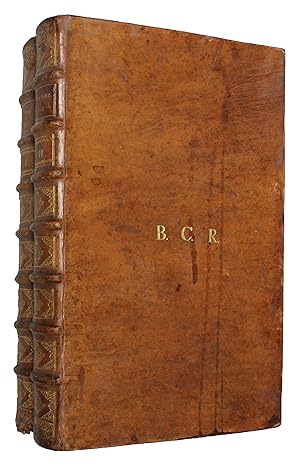
![Image du vendeur pour Systema Intellectuale huius Universi seu de Veris Naturae rerum originibus Commentarii qvibus omnis eorum Philosophia, qvi Deum esse negant, funditus evertitur. Accedunt Reliqua eius Opuscula. Joannes Lavrentius Moshemius, Omnia ex Anglico Latine vert. - [THE "PLASTIC MEDIUM"] mis en vente par Lynge & Søn ILAB-ABF](https://pictures.abebooks.com/inventory/md/md1366615097.jpg)

![Image du vendeur pour Sur les Mouvemens électro-magnétiques et la théorie du magnétisme. (Traduit par M. Anatole-Riffault). + (André-Marie Ampere et Felix Savary:) Notes relatives au Mémoire de M. Faraday. - [ THE FIRST ELECTRIC MOTOR - INTRODUCING "LINES OF FORCE" AND THE UNIVERSE OF "FIELDS" (FRENCH EDITION).] mis en vente par Lynge & Søn ILAB-ABF](https://pictures.abebooks.com/inventory/md/md31140811269.jpg)

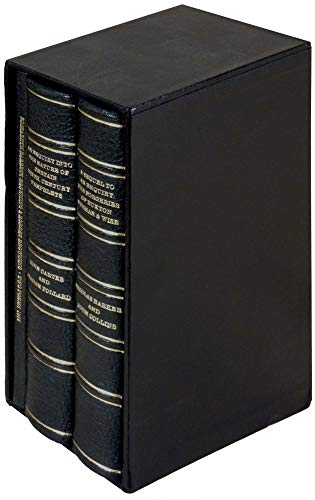


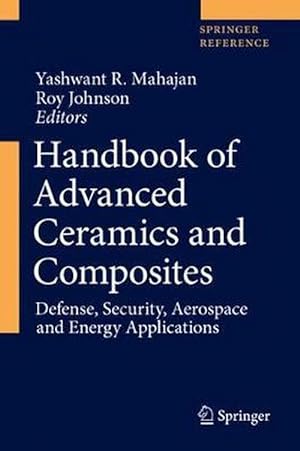
![Image du vendeur pour LA SUISSE PITTORESQUE ornée de vues dessinées spécialement pour cet ouvrage par W. H. Bartlett, accompagnée d un texte par William Beattie [.] Traduit de l anglais par L. de Bauclas. mis en vente par Librairie de l'Univers](https://pictures.abebooks.com/inventory/md/md30916451435.jpg)
